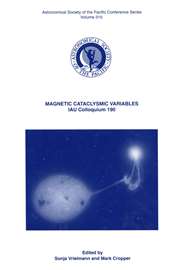Crossref Citations
This article has been cited by the following publications. This list is generated based on data provided by Crossref.
Partridge, R. Bruce
Richards, Eric A.
Fomalont, Edward B.
Kellerman, K. I.
and
Windhorst, Rogier A.
1997.
Small‐Scale Cosmic Microwave Background Observations at 8.4 GHz.
The Astrophysical Journal,
Vol. 483,
Issue. 1,
p.
38.
Gwinn, Carl
2004.
Correlation Statistics of Quantized Noiselike Signals.
Publications of the Astronomical Society of the Pacific,
Vol. 116,
Issue. 815,
p.
84.
Morgan, J. S.
and
Ekers, R.
2021.
A measurement of source noise at low frequency: Implications for modern interferometers.
Publications of the Astronomical Society of Australia,
Vol. 38,
Issue. ,

